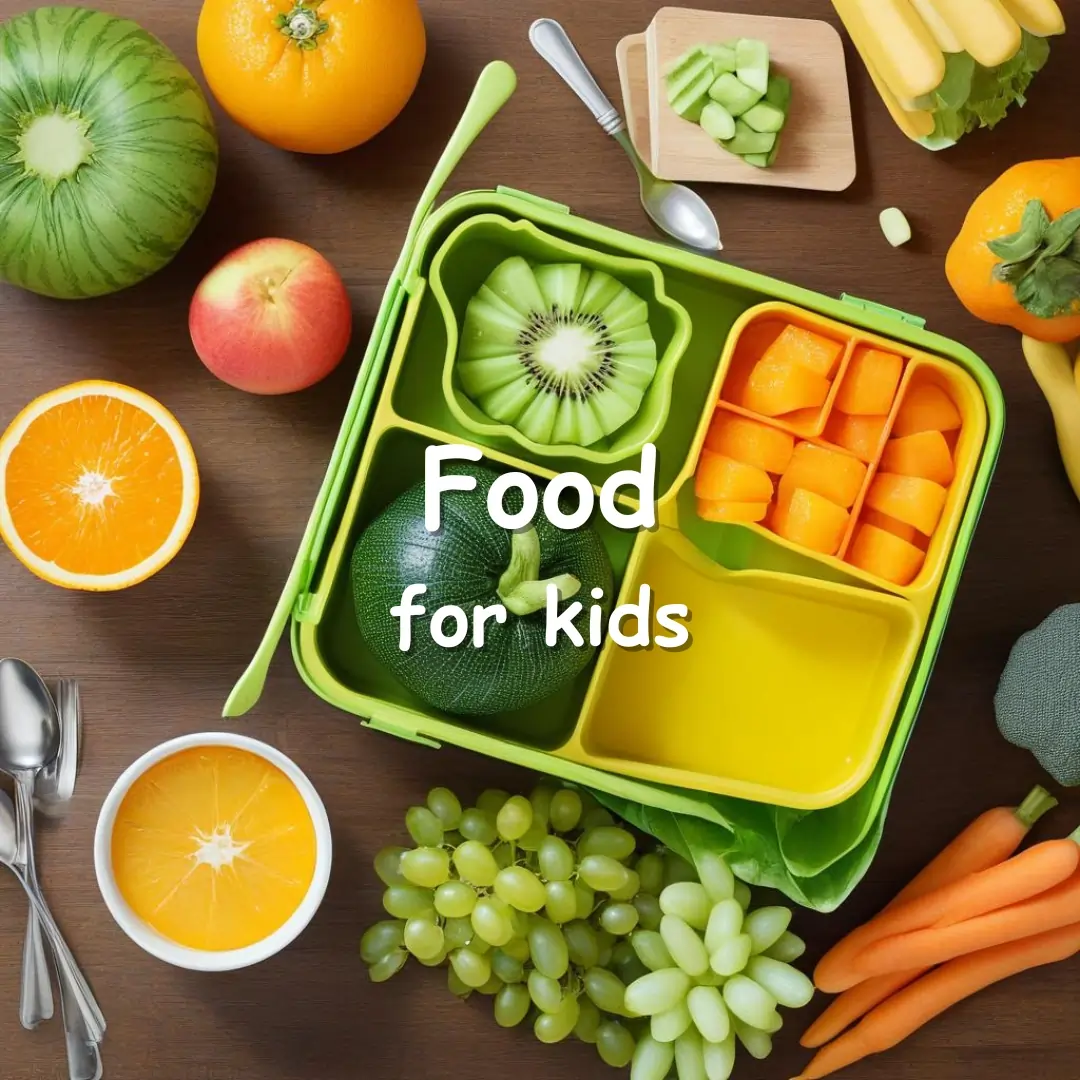Introduction
Feeding kids can be a challenge. Finding healthy, delicious meals that they actually enjoy can feel like a constant struggle. This is where our focus shifts to “Food for Kids.” We’ll explore easy and nutritious recipes that will not only nourish their growing bodies but also spark their culinary curiosity.
Firstly, we’ll delve into the importance of healthy eating habits for children. We’ll discuss how proper nutrition fuels their growth, strengthens their immune systems, and sets the stage for a lifetime of healthy choices.
Next, we’ll dive into a treasure trove of delicious and easy meal ideas. From quick breakfasts to exciting lunches and flavorful dinners, we’ll provide a range of options to suit every taste and schedule. We’ll also explore creative ways to get kids involved in the kitchen, making mealtime a fun and engaging experience for the whole family.
Finally, we’ll address the challenges of picky eaters. We’ll offer practical tips and strategies to introduce new foods, make mealtime enjoyable, and encourage healthy eating habits.
This blog post will equip you with the knowledge and resources you need to nourish your children with delicious and nutritious meals. Let’s embark on this culinary adventure together!
Why Healthy Eating Habits Matter for Kids
The Importance of Nutrition for Growth and Development
Children are in a constant state of growth. Their bodies need a steady supply of nutrients to build strong bones, muscles, and organs. Proteins are essential for building and repairing tissues. Healthy fats, like those found in avocados and nuts, support brain development. Vitamins and minerals, abundant in fruits and vegetables, play crucial roles in various bodily functions. A balanced diet provides the essential building blocks for children to grow and develop to their full potential.
Building Strong Bones and a Healthy Immune System

Calcium is vital for building strong bones and teeth. Vitamin D helps the body absorb calcium effectively. Sunlight exposure and fortified foods are good sources of vitamin D. A strong immune system is important to fight infection. Vitamin C, found in citrus fruits and berries, boosts the immune system. Zinc, present in seafood and legumes, also plays a key role in immune function. By incorporating these essential nutrients into their diets, children can build strong bones and a robust immune system.
Preventing Childhood Obesity and Related Health Issues
Childhood obesity is a growing concern. Unhealthy diets, high in processed foods and sugary drinks, contribute significantly to this issue. Obesity can lead to serious health problems in adulthood, including heart disease, type 2 diabetes, and even some types of cancer. Encouraging healthy eating habits from an early age is crucial for preventing childhood obesity and ensuring a healthy future for children. Regular physical activity, combined with a balanced diet, is key to maintaining a healthy weight.
Setting a Foundation for Lifelong Healthy Eating
The eating habits children develop early in life can have a lasting impact. By introducing them to a variety of healthy foods and encouraging them to make nutritious choices, we can help them develop a lifelong love of healthy eating. This will not only benefit their physical health but also their mental and emotional well-being. When children learn to appreciate the taste and value of fruits, vegetables, and whole grains, they are more likely to make healthy choices throughout their lives.
Easy & Nutritious Meal Ideas for Kids

Quick and Easy Breakfast Options
Starting the day with a nutritious breakfast fuels children for learning and play. Oatmeal topped with berries and nuts is a quick and easy option. Yogurt parfaits with fruit and granola provide a balanced start to the day. Smoothies are a convenient way to pack in fruits, vegetables, and even protein powder. Scrambled eggs with whole-wheat toast are another simple and satisfying breakfast choice.
For more food for kids, check out our post on ‘12 best unique Healthy snacks for school Energize Your Kids‘
Delicious and Healthy Lunch Ideas
Lunchtime doesn’t have to be a struggle. Leftovers from dinner can be a quick and easy lunch option. Sandwiches on whole-grain bread with a variety of fillings are always a hit. Salads with grilled chicken or fish can be made more appealing to kids with colorful toppings. Soup and a side salad make a light and refreshing lunch. Homemade wraps with hummus, vegetables, and lean protein are a fun and nutritious option.
Simple and Flavorful Dinner Recipes
Dinnertime can be a fun and family-oriented experience. Taco Tuesdays are a classic for a reason. Homemade pizza with whole-wheat crust and healthy toppings is a crowd-pleaser. Stir-fries are quick and easy to prepare and can be customized with a variety of vegetables and protein sources. Baked chicken or fish with roasted vegetables is a simple and nutritious option. Don’t forget about the power of leftovers!
Involving Kids in the Kitchen
Involving children in the cooking process can make mealtime more enjoyable. Let them help with simple tasks like washing vegetables, stirring ingredients, and measuring. This can spark their interest in healthy food for kids and encourage them to try new things. Baking cookies or muffins together is a fun and engaging activity that allows children to learn about measuring and following instructions.
Nutritious Snack Ideas
Healthy snacks are essential throughout the day to keep children energized. Fresh fruits like berries, grapes, and sliced apples are always a good choice. Vegetable sticks with hummus or guacamole are a nutritious and crunchy snack. Yogurt with fruit and granola is a good source of protein and calcium. Whole-grain crackers with cheese or nut butter are another healthy snack option. Trail mix made with nuts, seeds, and dried fruit can be a fun and energizing snack.
Involving Kids in the Kitchen
Age-Appropriate Cooking Tasks
Involving children in the kitchen can be a rewarding experience for both parents and kids. Start with simple tasks suitable for their age and skill level. Toddlers can help wash vegetables, tear lettuce, or stir batter with a spoon. Older children can measure ingredients, pour liquids, and even help with more complex tasks like chopping vegetables (with adult supervision, of course). As children grow, gradually increase the complexity of the tasks they can handle.
Making Mealtime Fun
Turn meal preparation into a fun and interactive activity. Play some music while you cook to create a lively atmosphere. Let children choose a recipe from a children’s cookbook. Involve them in the decision-making process, such as choosing ingredients or garnishes. Make it a game by having them identify different colors, shapes, and textures of the food. Celebrate their accomplishments and praise their efforts.
Growing Your Own Fruits and Vegetables
Growing your own fruits and vegetables is a fantastic way to get kids excited about healthy eating. Start with easy-to-grow plants like lettuce, spinach, or cherry tomatoes. Let children help with planting seeds, watering plants, and harvesting the produce. This hands-on experience teaches children about where their food comes from and encourages them to try new things. Even a small herb garden on a windowsill can be a rewarding project for young children.
Tackling Picky Eaters
Understanding Picky Eating
Picky eating is common among children and can be frustrating for parents. It’s important to remember that picky eating is often a phase and usually doesn’t indicate a serious problem. Children’s tastes and preferences are constantly evolving. What they dislike today, they may enjoy tomorrow. Avoid power struggles over food. Focus on creating a positive and relaxed mealtime environment.
Creative Ways to Introduce New Foods
Introduce new foods gradually and repeatedly. Offer small portions alongside familiar foods. Make food for kids fun and appealing by using colorful plates and creative presentations. Involve children in the preparation of meals. Let them help with simple tasks like washing vegetables or stirring ingredients. Use positive reinforcement and avoid negative comments about food. Be patient and persistent. It may take multiple exposures before a child accepts a new food.
Making Mealtime a Positive Experience
Create a relaxed and enjoyable atmosphere at mealtimes. Avoid distractions like TV or phones. Eat meals together as a family as often as possible. Use mealtime as an opportunity to connect and communicate with your children. Focus on positive conversation and avoid making mealtimes a battleground. Remember that mealtimes should be a pleasurable experience for everyone.
Resources and Tips
Helpful Websites and Apps
There are many valuable resources available online to help parents navigate the world of children’s nutrition. Websites like MyPlate offer a wealth of information on healthy eating for children. Numerous apps can also be helpful, such as those that track food intake, provide meal planning ideas, or offer healthy recipe suggestions.
Tips for Choosing Apps:
When choosing apps, look for those that are evidence-based and developed by registered dietitians or other qualified professionals. Read user reviews to get a sense of the app’s usability and effectiveness. Choose apps that are age-appropriate and engaging for your child.
Shopping Tips for Healthy Kids’ Food
When grocery shopping, focus on whole, unprocessed foods. Fill your cart with plenty of fruits, vegetables, whole grains, and lean protein sources. Look for low-sugar options like plain yogurt and unsweetened cereal. Limit processed foods, sugary drinks, and unhealthy snacks. Read food labels carefully to understand the nutritional content of products. Consider shopping the perimeter of the grocery store, where you’ll find fresh produce, dairy, and meat, rather than focusing on the aisles filled with processed foods.
Meal Planning for Busy Families
Meal planning can be a lifesaver for busy families. Set aside some time each week to plan out your meals. Involve your children in the meal planning process to get them excited about healthy eating. Make a grocery list based on your meal plan. Prepare meals in advance whenever possible, such as cooking large batches of grains or roasting vegetables. Keep healthy snacks readily available to avoid reaching for unhealthy options.
conclusion
Feeding children can be a rewarding yet challenging experience. By understanding the importance of healthy eating habits and implementing practical strategies, parents can nourish their children’s bodies and minds.
From exploring easy and nutritious meal ideas to tackling picky eaters, this guide provides valuable insights and resources to help families navigate the world of children’s nutrition.
Remember, every small step towards healthier eating habits contributes to a brighter future for our children.

